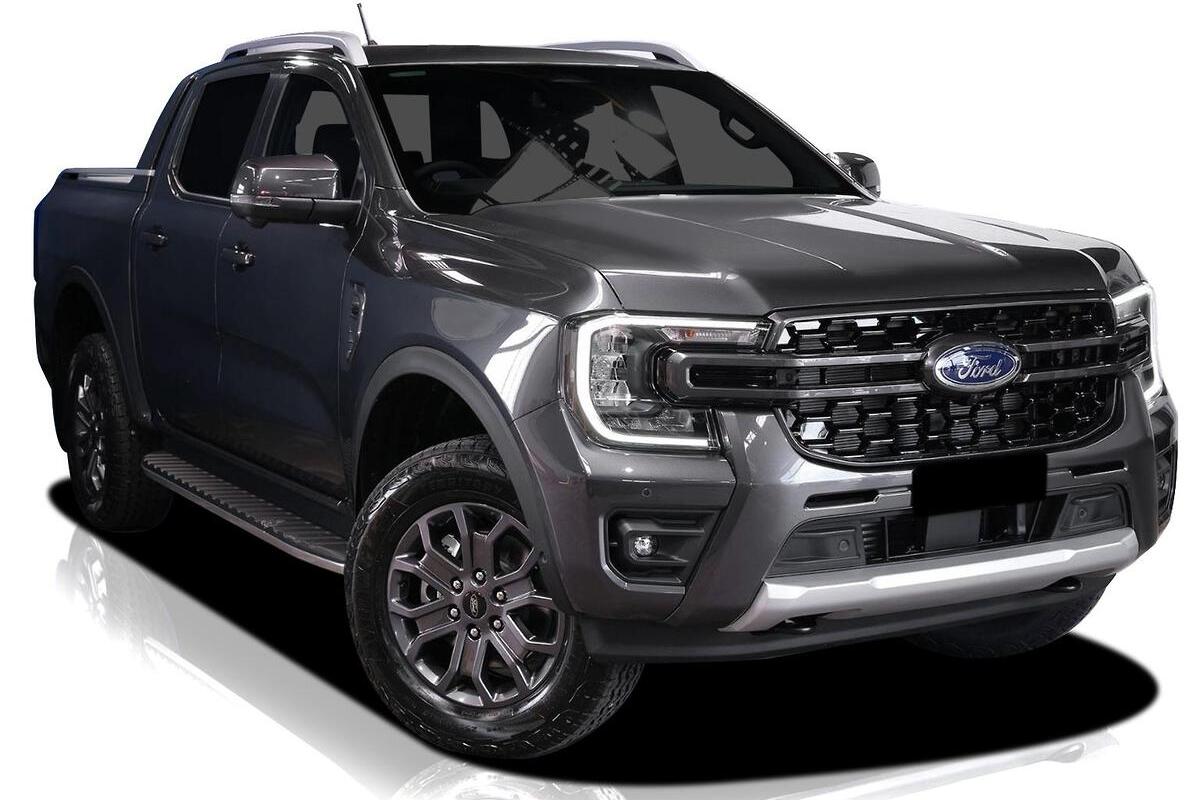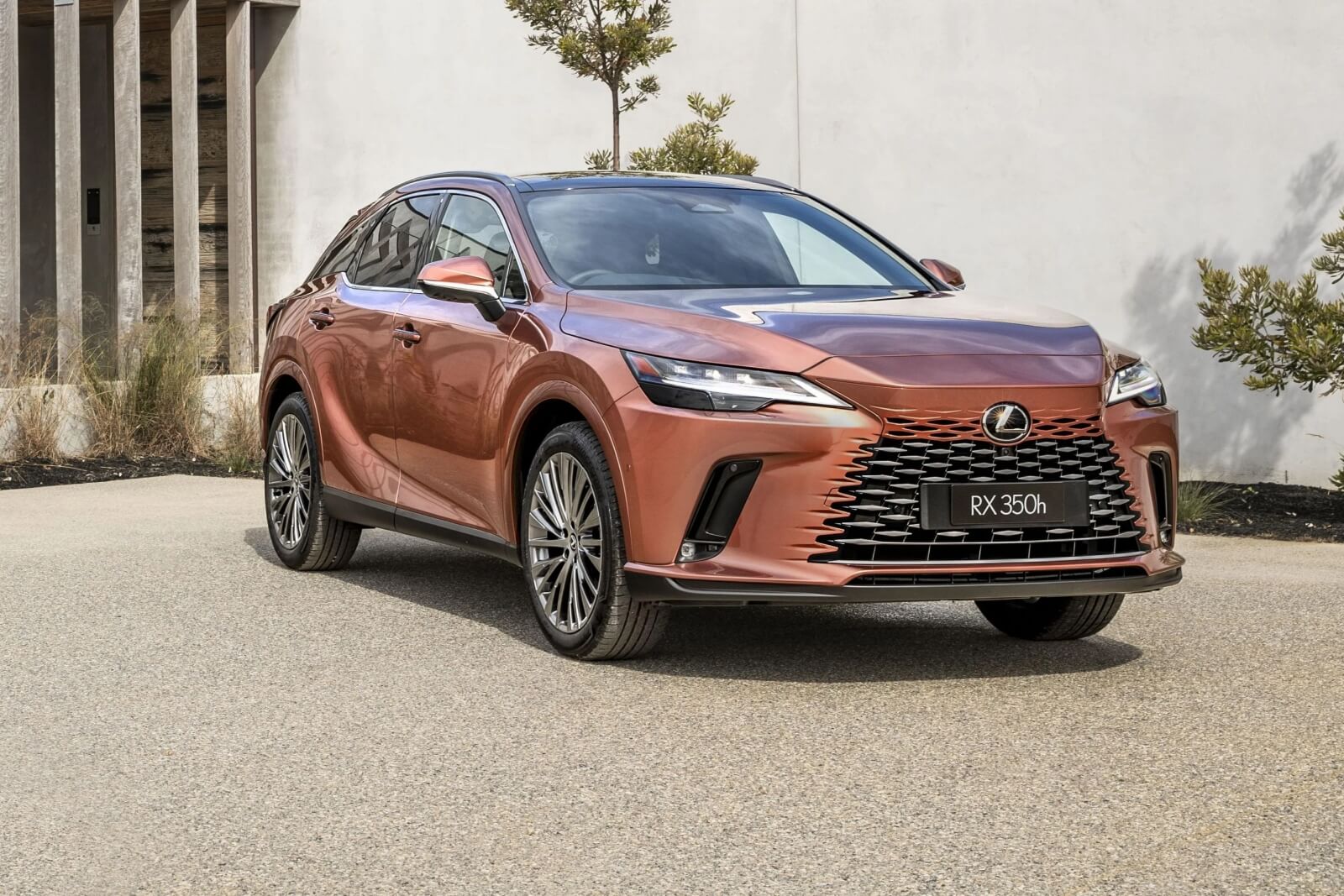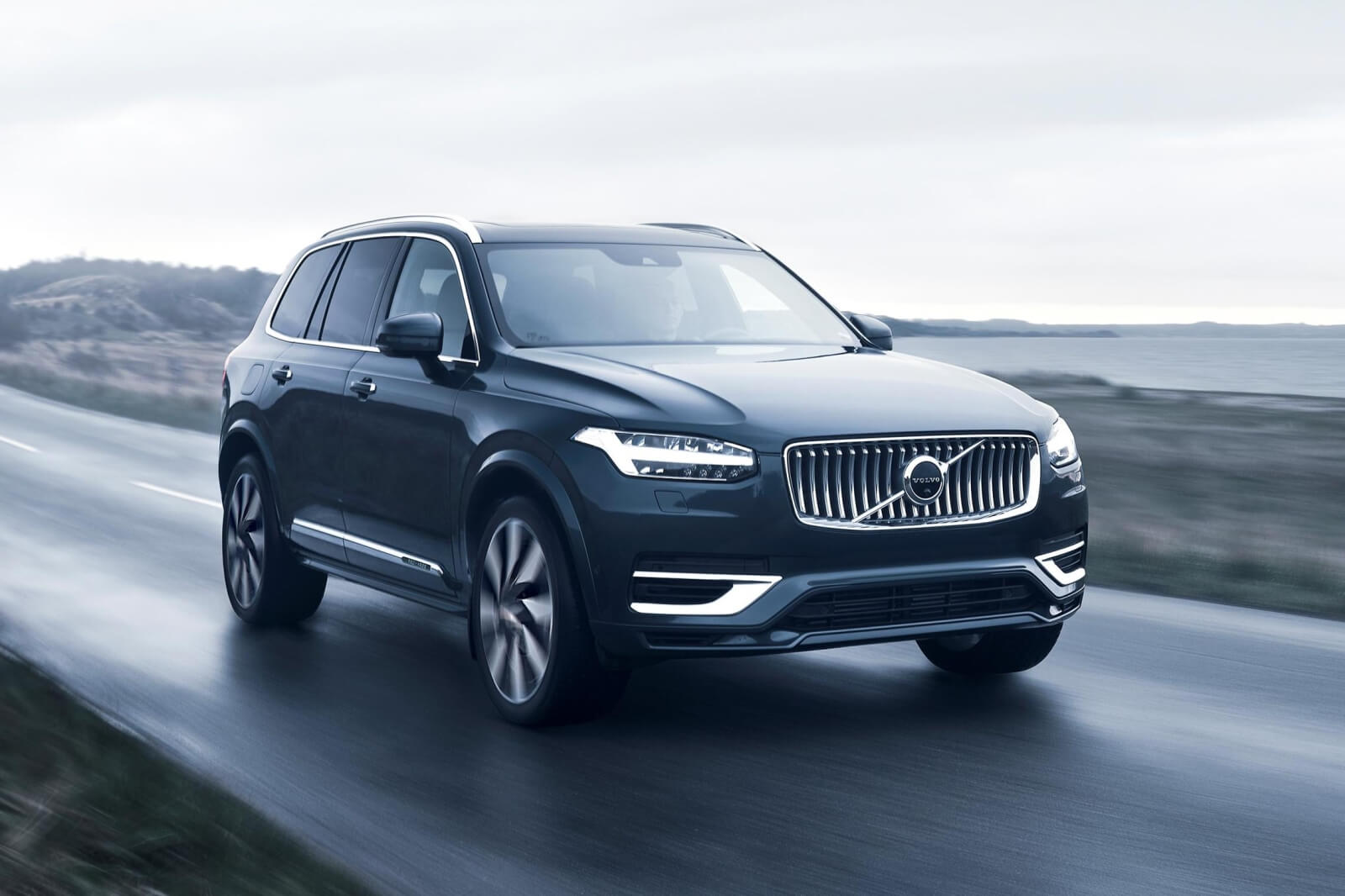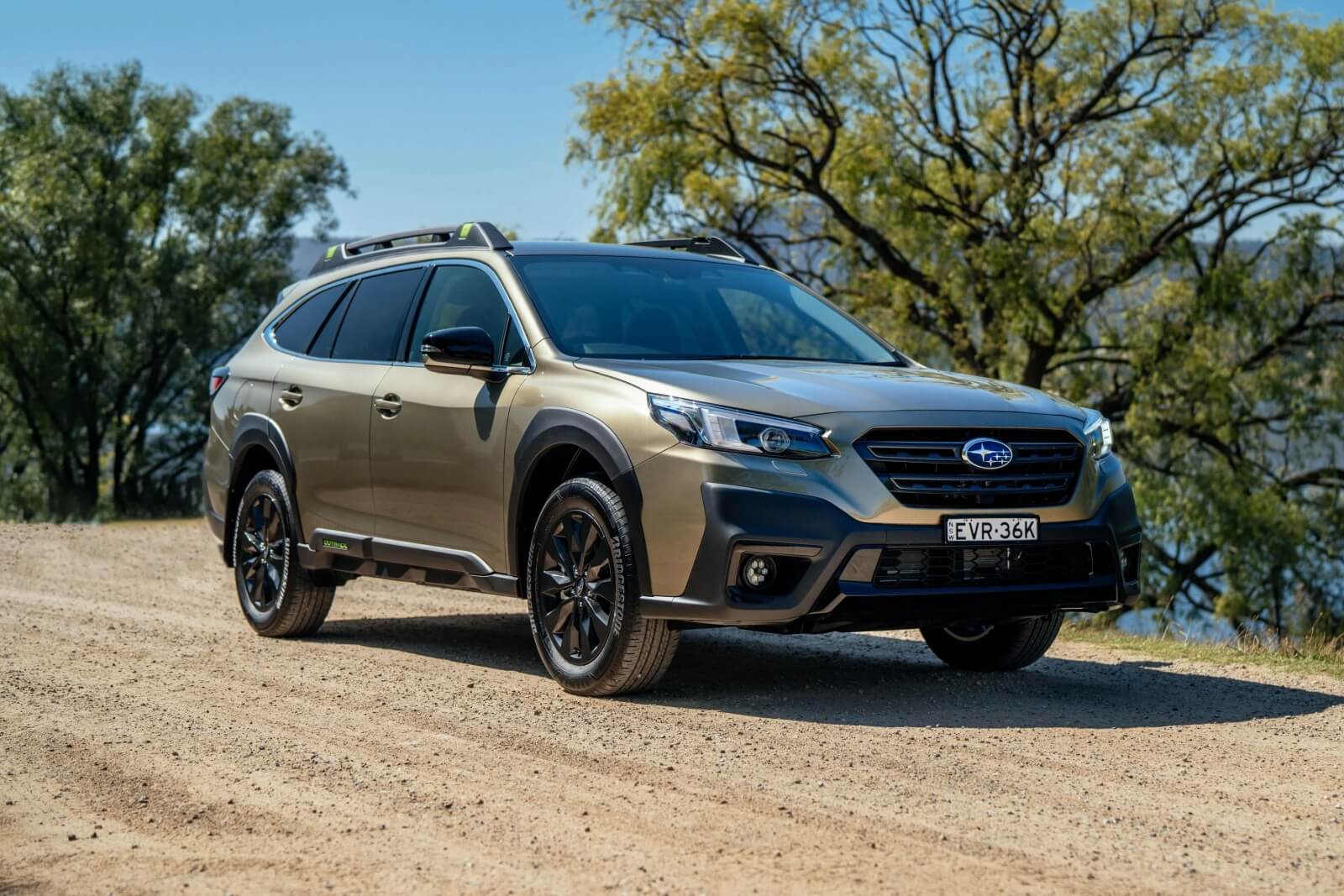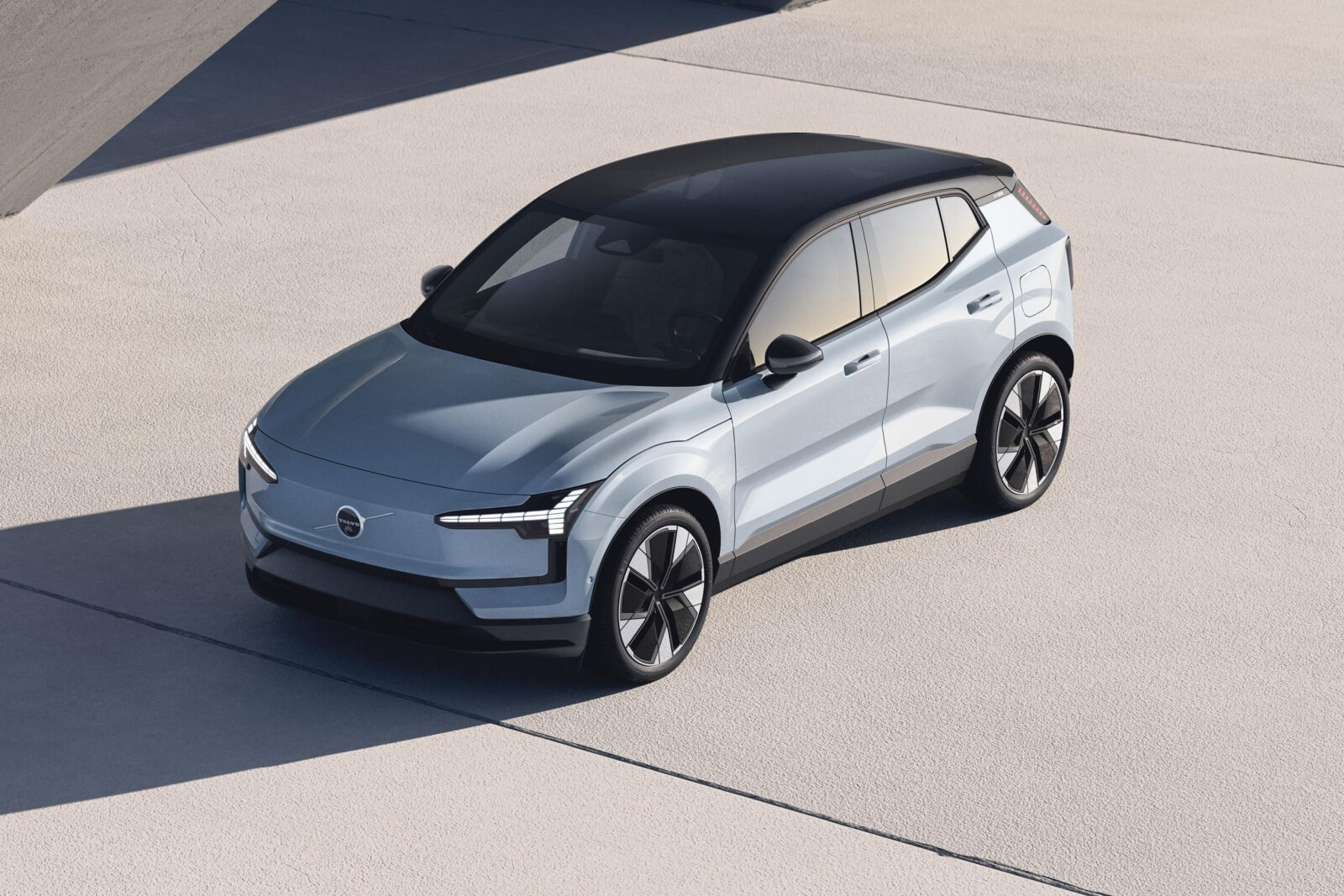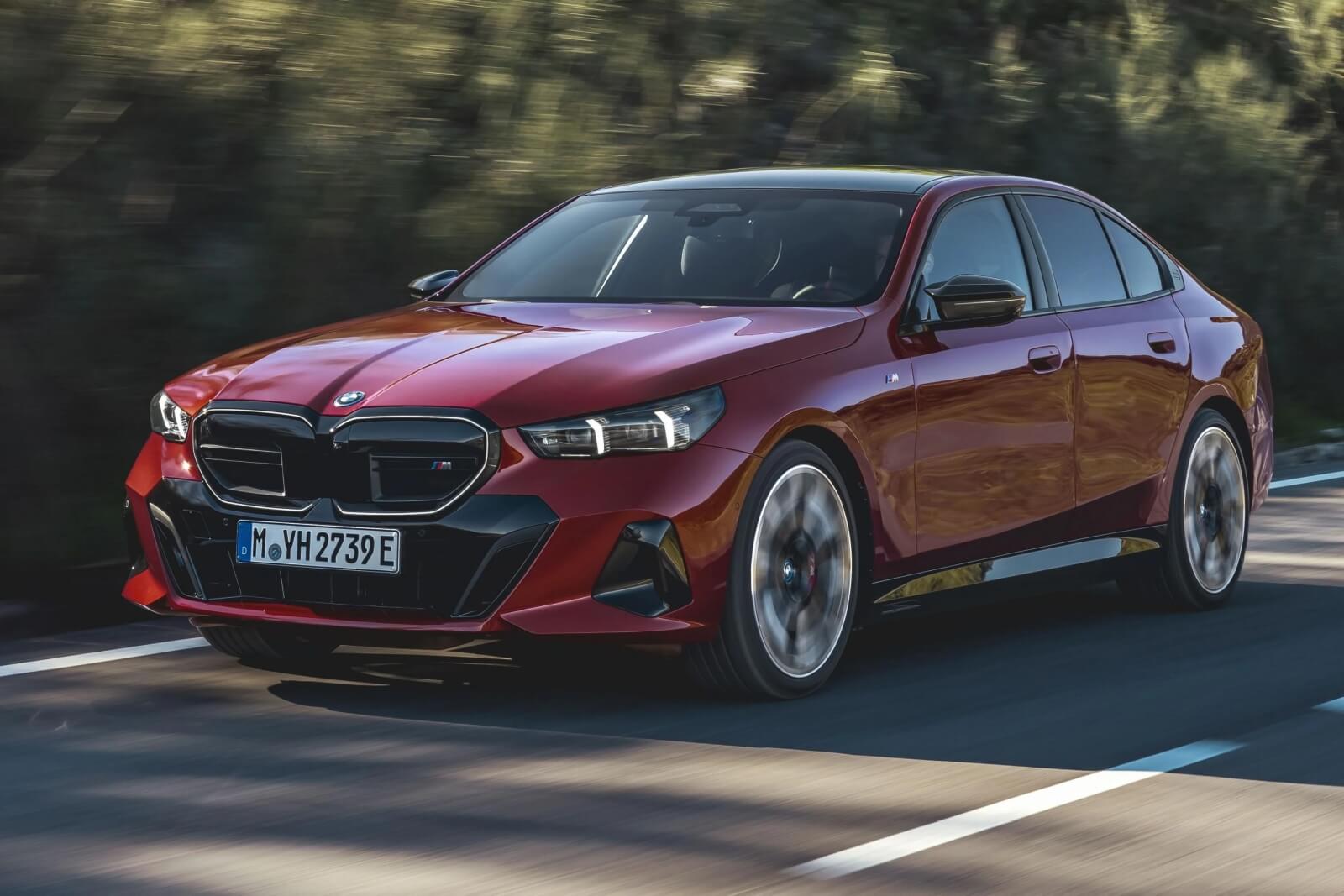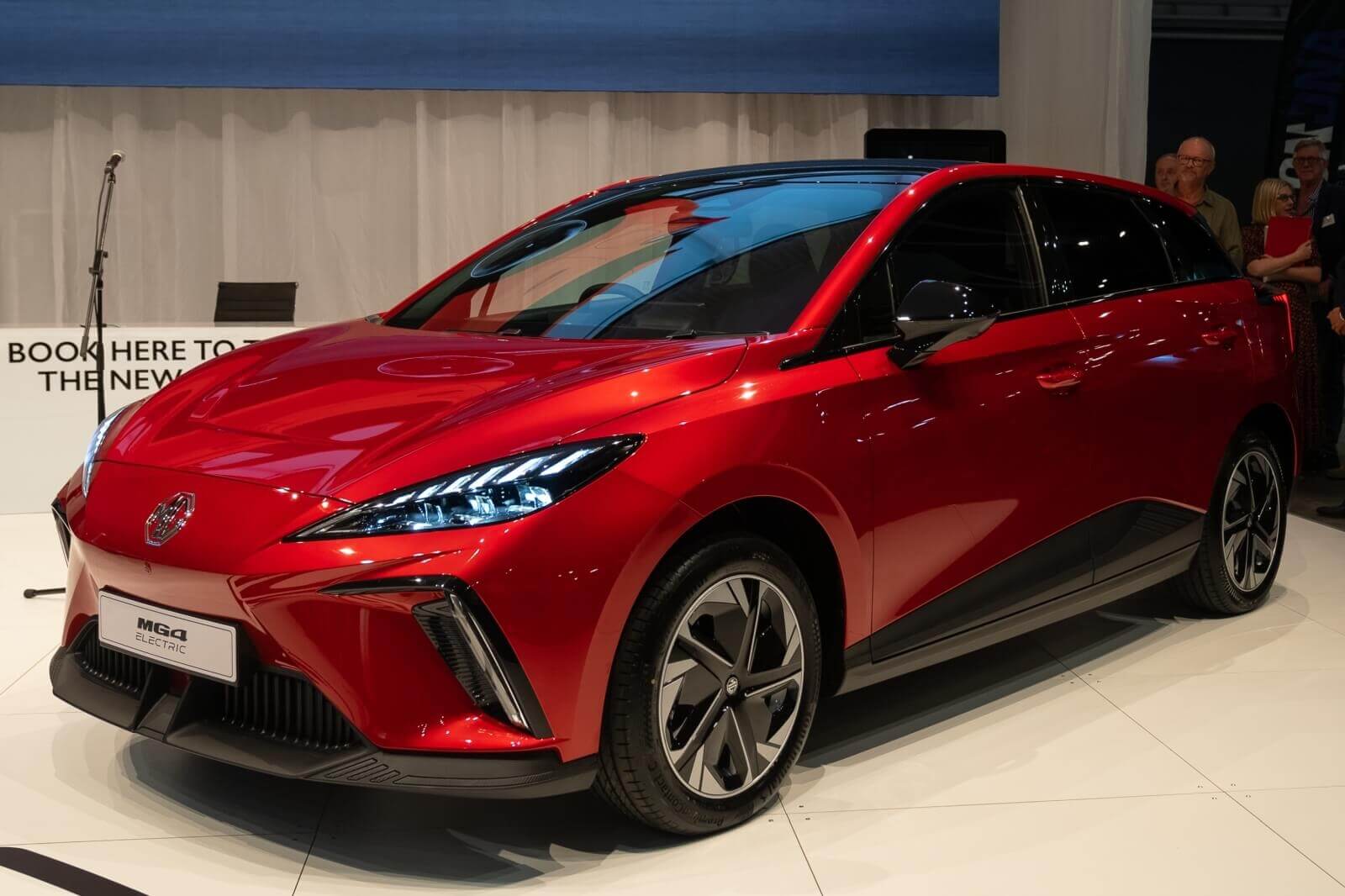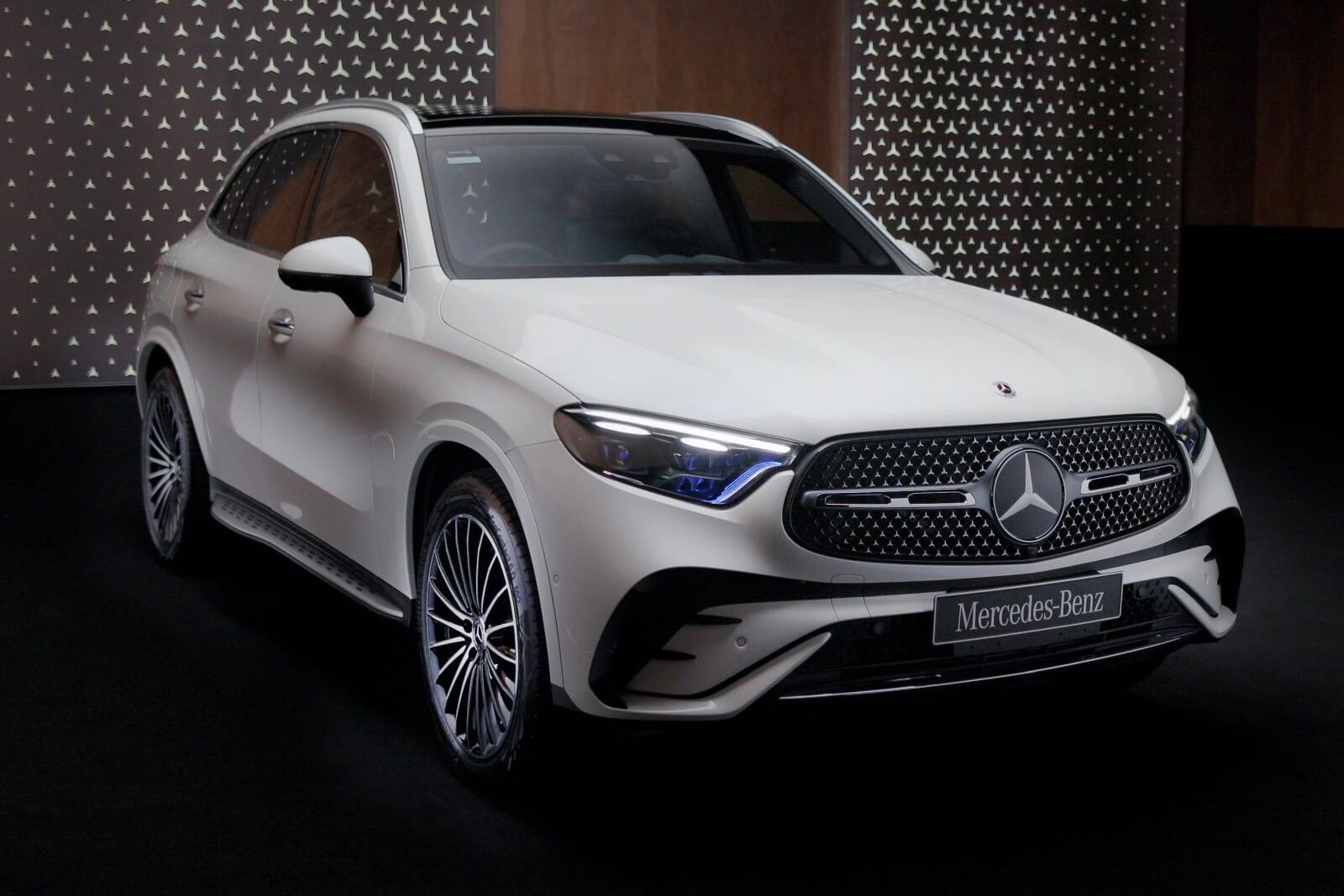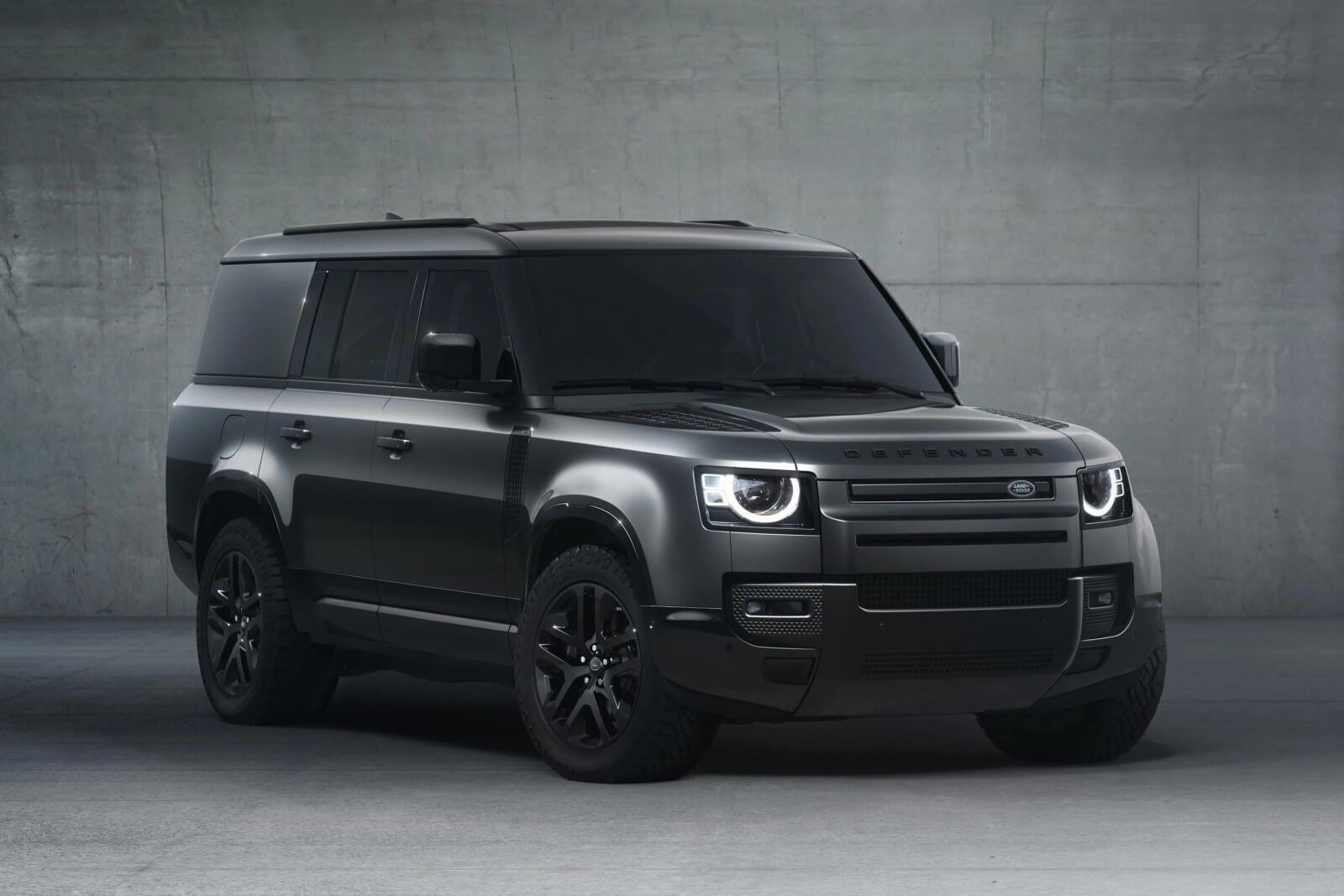The Ranger is asserting its dominance in the realm of dual-cab utes, and the Wildtrak V6 shines as the most prized variant within the standard Ranger series.
Pros
- Potent V6 engine
- Contemporary, comfortable interior
- 12-inch vertical touchscreen
- Wide range of on- and off-road capabilities
Cons
- The touchscreen can be challenging to navigate
- High price tag in comparison to other utes
- Long wait times for the Wildtrak V6
- Tricky to operate gear selector

What are the prices for the Ford Ranger Wildtrak?
2023 Ford Ranger Wildtrak Pricing
4×4 dual-cab pickup, 2.0 bi-turbo diesel, 10AT: $67,990 (+$800)
4×4 dual-cab pickup, 3.0 V6 diesel, 10AT: $71,190 (+$1000)
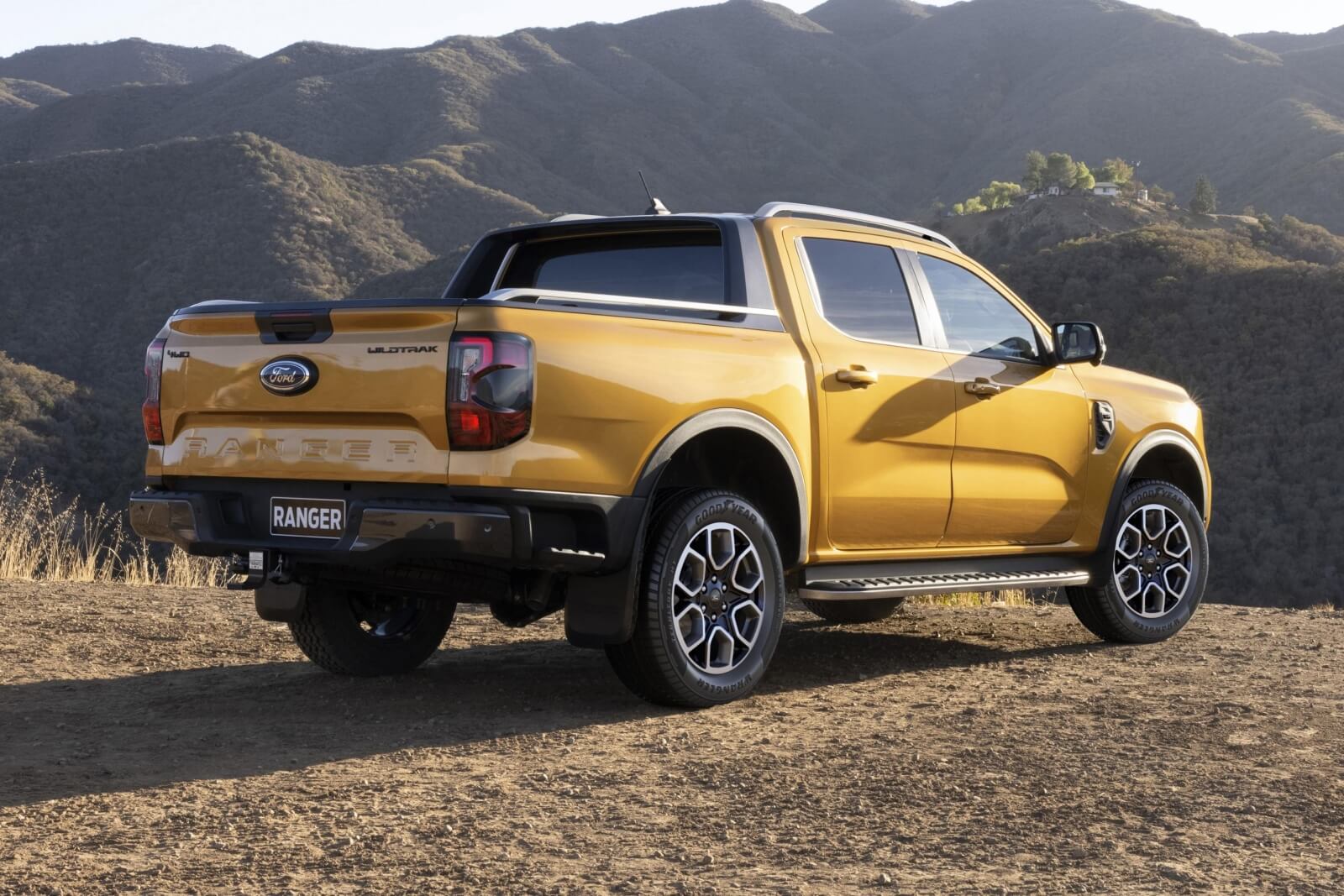
The prices will increase by $500 and $1200 respectively for the 2024 model year, become $68490 and $72390 for the V4 and V6 Ranger Wildtrak versions
Prices are excluding on road cost.
Positioned with a similar off-road bias like the Rogue, the Nissan Navara Warrior Pro-4X Warrior auto retails at $70,590 but sacrifices some interior opulence. The Isuzu D-Max X-Terrain, on the other hand, presents a more economical alternative to the Wildtrak at a drive-away price of $64,990.
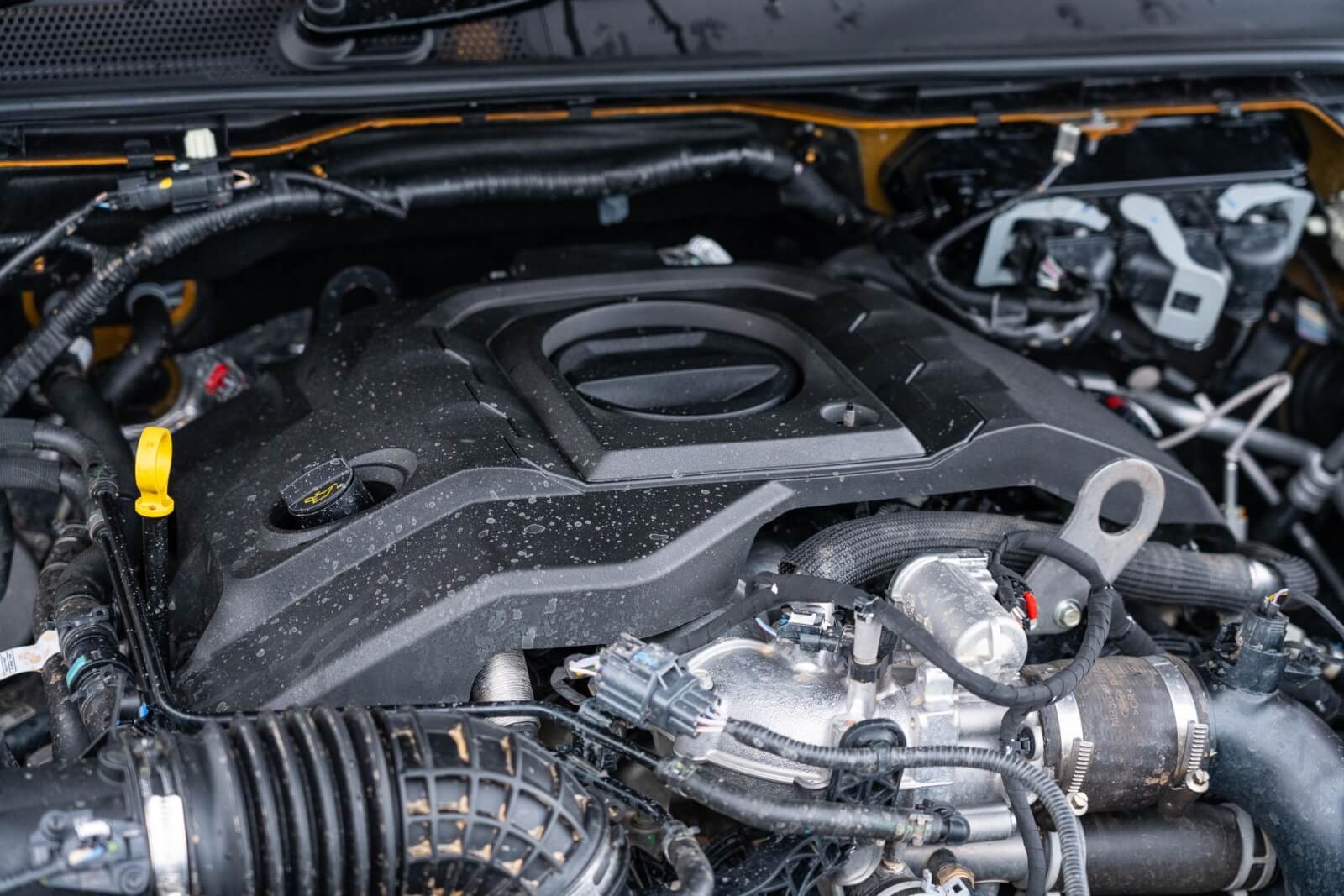
What’s under the bonnet?
The Ranger Wildtrak offers a choice between two powertrains. A budget-friendly 2.0-litre Bi-Turbo four-cylinder diesel engine provides a stable 154kW and a consistent 500Nm of torque.
Our test model came equipped with a 3.0-litre V6 turbo-diesel engine generating a substantial 184kW and 600Nm of torque. This engine works in harmony with a 10-speed automatic transmission, driving power to the road through a versatile four-wheel drive system, supporting 2H, 4H, and 4L modes. This system also includes a 4A mode, allowing for all-wheel drive on the tarmac in any weather, a feature likely to appeal to many customers.
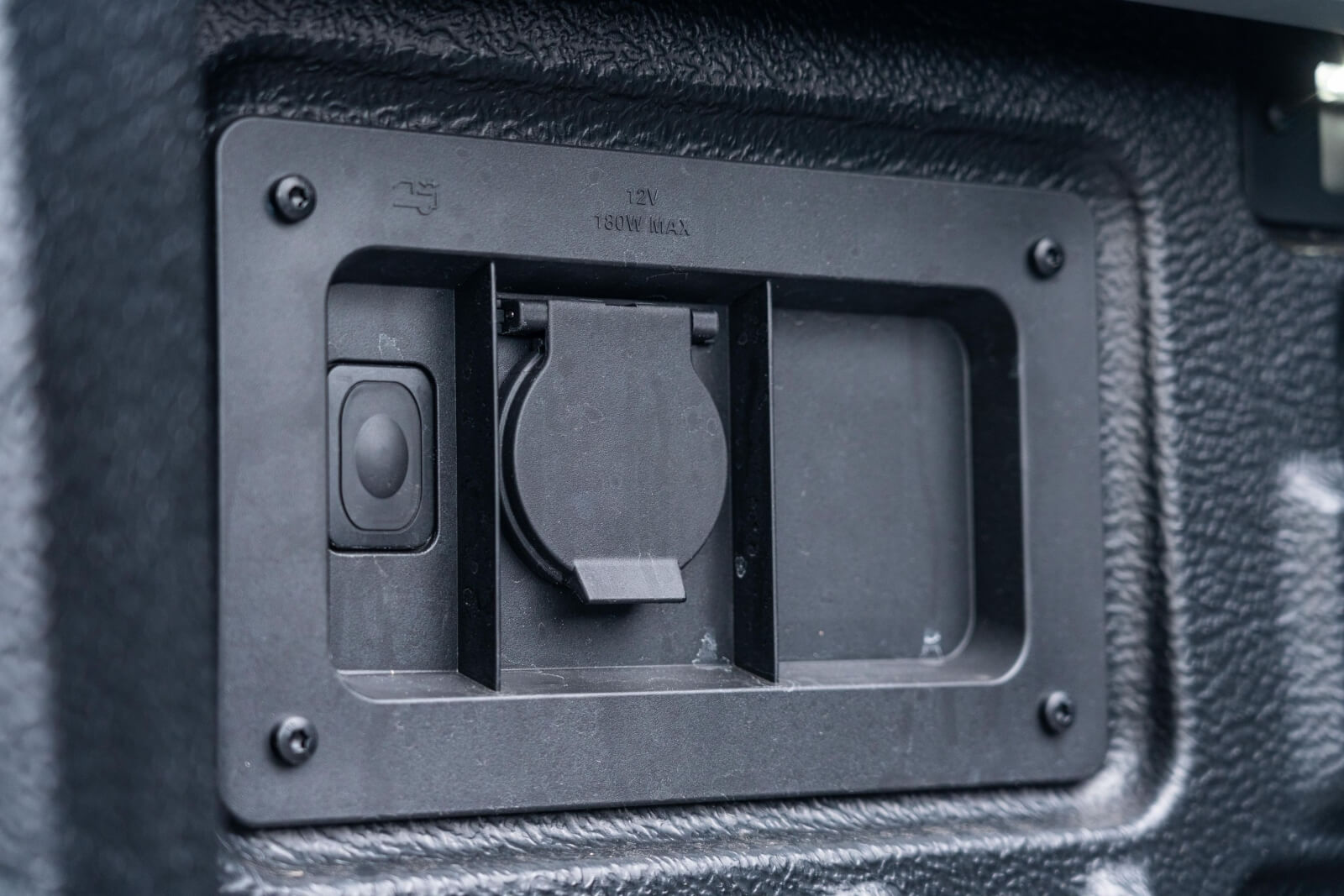
The V6 is claimed to consume 8.4 litres of fuel per 100km in mixed driving, with an 80L fuel tank. Our testing, with a lean towards highway driving, returned a similar figure at 8.5L/100km over 680km.
The Wildtrak offers a payload of 951kg, a braked towing capacity of 3500kg, a GCM of 6400kg, and a GVM of 3280kg. The vehicle's tare weight sits at 2335kg.

How does the Ford Ranger Wildtrak drive?
The upgrade to a 3.0-litre engine for the Wildtrak costs less than $4000 more than the 2.0-litre biturbo diesel option. It provides a significant boost in power and torque, delivering 184kW and 600Nm as opposed to the biturbo's 154kW and 500Nm. Both engines are paired with Ford's smooth 10-speed automatic gearbox.
The V6 starts with a satisfying rumble, hinting at its more substantial power. Its performance offers a relaxed sense of muscle, and dropping gears via the e-Shifter's side buttons gives access to its ample torque for rapid acceleration. It won't stun you with its performance – for that, you'd need a Raptor – but it brings more force to the table for heavy-duty towing or challenging off-road use.
The bi-turbo four-cylinder is a versatile, endearing, and economical alternative to the V6, and it will more than satisfy those who plan to use the Wildtrak for less demanding tasks. However, the appeal of a V6 badge, additional power, and torque coupled with a robust six-cylinder noise cannot be denied.

The 10-speed auto gearbox performs impeccably across various terrains and driving conditions, providing a seamless and stress-free driving experience. Urban travel is particularly relaxed, with the transmission smoothly shuffling between gears while maintaining low revs.
Despite its size, the Ranger navigates urban landscapes effectively, thanks to its comfortable cabin, excellent insulation, and superior high-riding visibility. Its suspension absorbs shocks remarkably well, handling large potholes, speed bumps, and kerbs with ease.
The new Ranger's suspension strikes a balance between firmness and comfort, providing stability on corrugated and fast dirt roads. On paved roads, this firmness pays off as the Ranger remains grounded and resists rolling through corners.

The Ranger's suspension, combined with its all-wheel drive capabilities, results in an impressive drive on wet and slippery conditions. The braking feel and performance, thanks to disc brakes on all four corners, are also excellent.
Body control is admirably maintained, instilling confidence while maneuvering corners and roundabouts. This is further bolstered by responsive steering and adequate grip from all-terrain tires. The switch to rear disc brakes also enhances stopping performance.
The Wildtrak offers a full array of drive modes, enabling adaptations to various conditions via a rotary dial. These modes include Normal, Eco, Tow/Haul, Slippery (for on-road) and Mud/Ruts and Sand for off-road situations. A dedicated off-road screen accessed through a console button makes off-roading an accessible and enjoyable experience.

Despite its off-road capabilities, the Ranger doesn't compromise on luxury. Faux-leather interiors and digital assistance make off-roading feel even more effortless. Additional tools such as a front wide-view camera, a 360-degree camera, and accessible rear diff-lock and hill descent control make it an excellent choice for both novice and experienced off-roaders.
However, it's important to note that the reversing camera tends to accumulate mud and spray, so having a cloth on hand might be useful. The hill descent control is efficient and unobtrusive, and the surround-view camera offers high-resolution visibility of the trail ahead.
Based on our experiences, the Ranger offers a straightforward and reliable way to venture off-road.
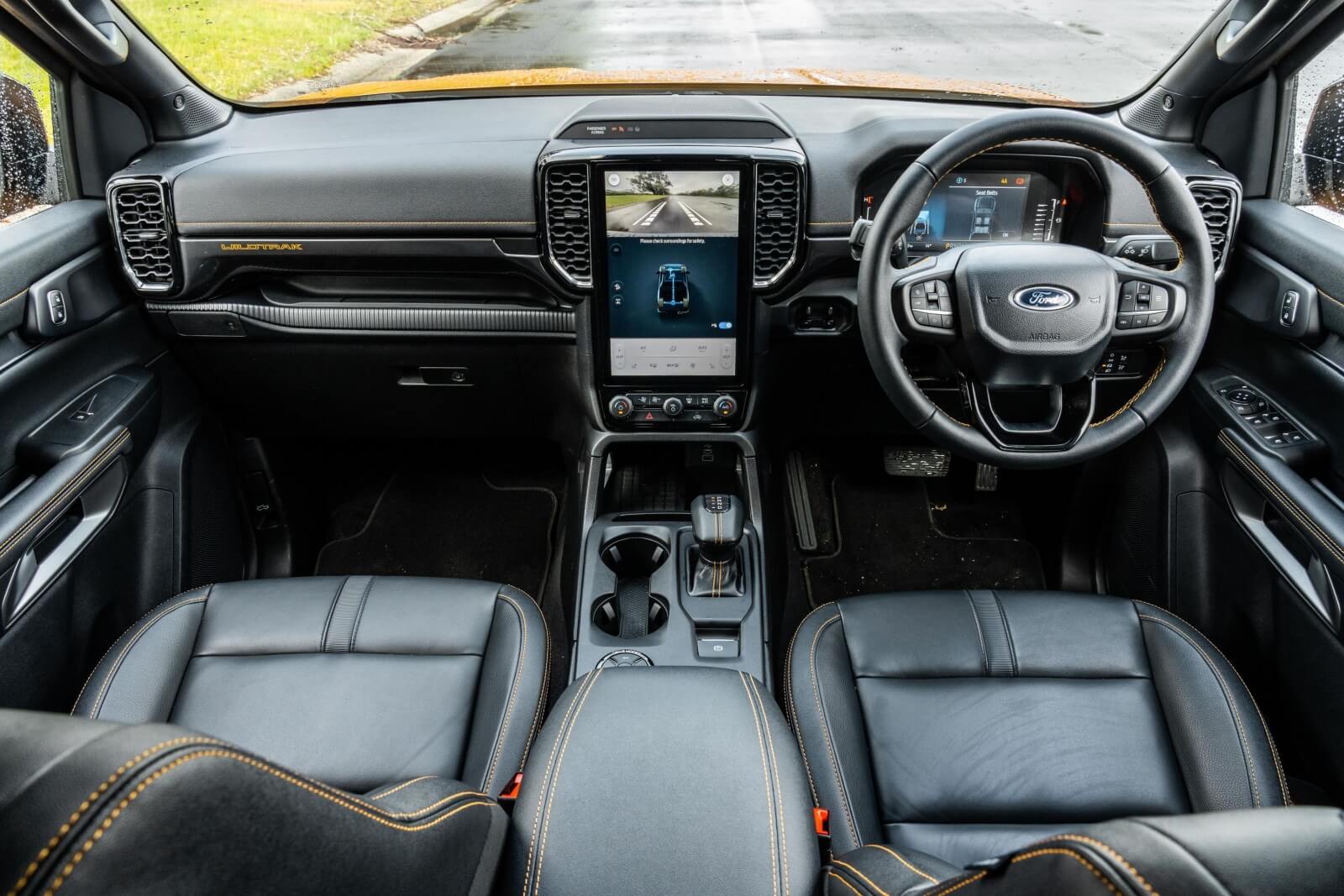
What is the Ford Ranger Wildtrak like on the inside?
The Ranger Wildtrak boasts a formidable array of specifications. It comes equipped with leather-accented power front seats, which are heated and embossed with the 'Wildtrak' logo, a leather steering wheel and gear shifter, an 8-inch digital instrument cluster, a 12-inch vertical infotainment screen, wireless Apple CarPlay and Android Auto compatibility, wireless phone charging, integrated sat nav and voice control, dual-zone climate control, ambient lighting, self-parking, and smart entry and start, to mention a few.
Though not the pinnacle of high-tech, the digital dashboard is lucid and user-friendly, allowing a fair degree of customization. The real game-changer, however, is the Wildtrak's 12-inch infotainment screen.
Despite being a workhorse, the Ranger's central feature is impressively sophisticated. During our test, we found the system's functionality and SYNC 4A connectivity exceptional, with menus being swift and simple to navigate. In a wise move, Ford has maintained physical buttons for climate control and volume, demonstrating that not all functions need to be incorporated into the touchscreen.

The center console is neat and organized, featuring a hefty e-Shifter (which demands some familiarity for accurate shifting due to its sensitivity), an electronic handbrake, and drive mode selector. Notably, the console houses cup holders and additional ones are cleverly positioned beneath the air vents on the dashboard – perfect for rapidly cooling your piping hot roadside coffee. A specially designed space even accommodates your fast-food fries, marked by a playful chip packet symbol.
From the driver's perspective, an aviation-inspired switch panel is situated above, offering six switches that facilitate the smooth installation of aftermarket accessories like driving lights – a commendable addition.
Limited blank switches for additional accessories are found elsewhere in the cabin (I found just one), implying you may need something like ARB's Linx system for more installations.
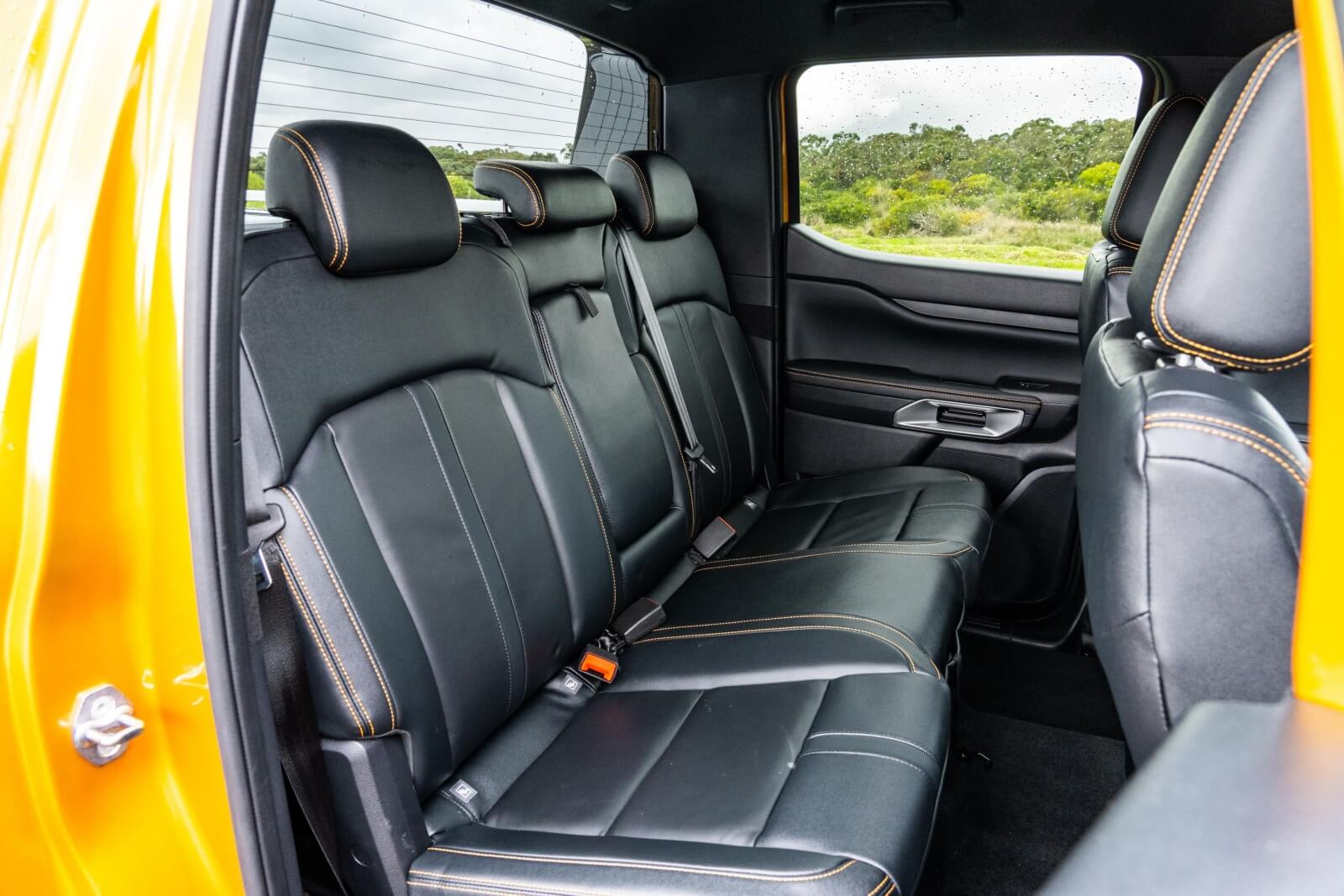
The design of the interior door handles is unique; instead of pulling a lever, you squeeze the handle to open the doors. I found this quite intuitive and easier than traditional handles. There's ample storage under the rear seats, which is highly practical.
Lifting the rear bench seat reveals further storage, a plastic box perfect for stowing away a tow bar or snatch strap. The rear seating area maintains the same level of comfort – though the seats are somewhat upright, they provide generous head and leg room. A welcomed addition to the Ranger is the inclusion of rear air vents.
Aesthetically, Ford has done a remarkable job with the interior design of the Ranger Wildtrak. Despite the prevalence of black plastic, the presence of contrasting orange stitching adds an appealing touch.
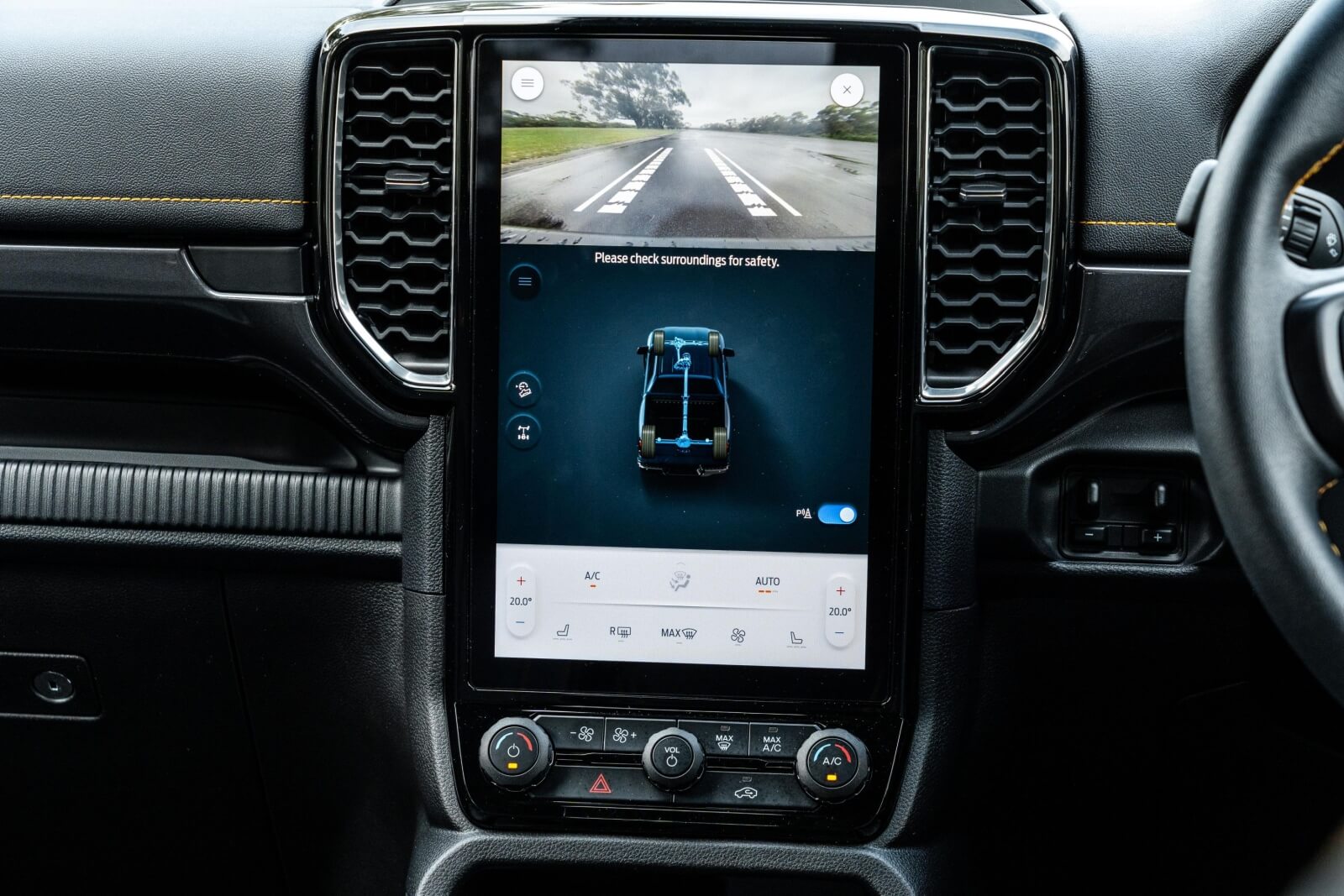
The seats are notably comfortable, a feature my wife particularly enjoyed on a cold trip to Canberra, along with the convenience of the wireless phone charger.
With 1200mm of cargo storage space between the wheel arches, numerous adjustable tie-down points, and LED lighting in the tub, the Ranger epitomizes practicality.
The steps on the side of the tub are a straightforward yet effective addition, as is the electronically controlled roller hard lid that can be operated both from inside the vehicle and via a push button in the tub.

Is the Ford Ranger Wildtrak safe?
Despite the Ford Ranger Raptor still awaiting its ANCAP rating, all other Ranger models have achieved a five-star ANCAP safety rating.
It boasts impressive safety ratings: 84 per cent for adult occupant protection, 93 per cent for child occupant protection, 74 per cent for vulnerable road user protection, and 83 per cent for safety assist.
Vehicles manufactured before August 20, 2022, will need a software update for their lane-keeping system to align with the specifications of the five-star rated vehicles. Ford assures that dealers will perform this update during the vehicle’s next scheduled maintenance service.

The 2023 Ford Ranger comes with the following standard safety equipment:
Nine airbags
Autonomous emergency braking
Lane-keep assist
Lane-departure warning
Road edge detection
Blind-spot assist
Rear cross-traffic alert (pickup only)
Trailer Coverage (when factory Tow Pack is fitted)
Rear-view camera
Rear parking sensors (pickup only)
Other safety equipment such as front parking sensors, adaptive cruise control with stop/go, surround-view camera, and fully-autonomous parking assist are available on higher trim levels.

How much does the Ford Ranger Wildtrak cost to run?
Similar to the broader Ford range, the Ranger comes with a five-year, unlimited-kilometre warranty.
Regular maintenance is due every 12 months or 15,000 kilometres, with the first five services priced at $329 under Ford’s capped-price service scheme.
The 3.0-litre V6 is reasonably efficient, consuming an average of 8.4L/100km, an improvement on the 8.9L/100km from the previous Ranger's 3.2-litre five-cylinder engine. However, it's still more than the 7.6L/100km achieved by the Wildtrak model with the 2.0-litre biturbo-diesel engine, a worthy option if fuel economy is a primary concern, especially for longer journeys.
During our comprehensive test drive of the Wildtrak V6, which included highway, rural, urban, and challenging off-road conditions, we recorded an overall consumption of 10.6L/100km (unladen). On the highway, this dipped below 8L/100km.

Yeecar’s Take on the Ford Ranger Wildtrak
The stakes in this segment are continually rising, and it's intriguing to contemplate what other automakers will unveil to contend with the fresh Ford Ranger.
With its remarkable blend of on and off-road capabilities, coupled with an array of coveted features, the Ranger, particularly in its double cab 4×4 Wildtrak V6 configuration, asserts its position as a superior contender in the pickup market.
While the V6 engine is undoubtedly impressive, potential buyers should not hastily dismiss the four-cylinder biturbo. This engine offers ample power for most drivers, delivers superior fuel economy, and allows quicker access to a Wildtrak due to a less congested waiting list.
The Ranger strikes an excellent balance in terms of ride quality, handling, features, and an extensively digitized cabin, all of which substantiate the vehicle's asking price.
Ford's collaboration with ARB has led to a variety of aftermarket accessories, available through dealerships or other accessory outlets, a commendable strategy that other automakers would do well to emulate.
In my view, the V6 Wildtrak Ford Ranger currently holds the title of the best ute available in the market.

